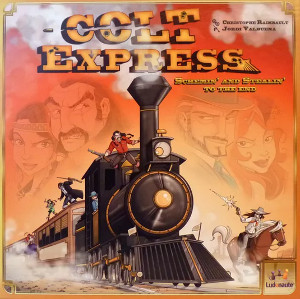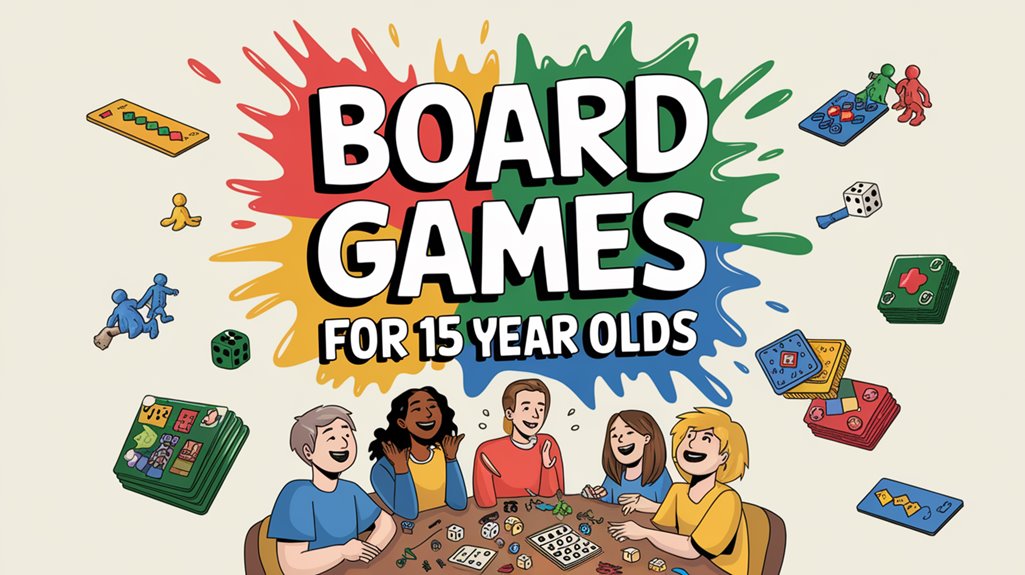Western-themed tabletop games recreate America’s frontier through mechanical frameworks that implement tactical positioning, resource management, and asymmetric powers to simulate historical tensions. These designs balance thematic authenticity with strategic depth, evolving beyond simple shootouts to incorporate economic systems and territorial control. The genre offers varying complexity levels to accommodate different player preferences.
Key Takeaways
- Western-themed board games often integrate tactical positioning, resource management, and train elements as core gameplay mechanics.
- Games like “Colt Express” feature three-dimensional train environments that enhance strategic depth and player immersion.
- Character-specific abilities and asymmetric advantages create replayability in Western-themed games through diverse tactical scenarios.
- “Bang: The Dice Game” uses hidden identity mechanics to blend Wild West showdowns with psychological warfare elements.
- Western board games frequently blend frontier aesthetics with other genres like Lovecraftian horror for unique thematic experiences.
Shootouts On Tabletops
Numerous Western-themed board games have raised the ideal frontier gunfight into sophisticated tabletop mechanics. These shootouts on tabletops transcend mere dice rolling, incorporating tactical positioning, resource management, and psychological elements that mirror the tension of historical Western confrontations. Games like “Colt Express” utilize three-dimensional environments, while “Flick ‘Em Up” introduces dexterity components that demand physical precision alongside strategic thinking.
- “Bang: The Dice Game” employs hidden identity mechanics, creating layers of deception within the classic shootout framework
- Character-specific abilities in these games facilitate asymmetrical confrontations, enhancing replayability
- The integration of timing mechanisms simulates the split-second decision-making intrinsic to frontier gunfights
This evolution of Western themed shootout mechanics demonstrates the genre’s versatility, allowing players to experience frontier justice through multiple strategic lenses while maintaining historical atmosphere and competitive engagement.
Brimstone’s Horror-Western Fusion
While traditional Western board games typically focus on historical authenticity, Shadows of Brimstone: City of Ancients revolutionizes the genre by integrating Lovecraftian cosmic horror with frontier aesthetics. This 1-4 player dungeon crawler liberates players from conventional genre constraints through its innovative hybridization.
The game’s architecture employs modular boards and customizable scenarios, ensuring tactical variability across sessions. Characters and equipment reflect this duality, fusing six-shooters with supernatural elements that demand strategic resource management and combat optimization. This system creates emergent gameplay where Western archetypes face otherworldly threats.
Shadows of Brimstone distinguishes itself through mechanical depth rather than thematic gimmickry. The monster encounters and mission structures challenge players to adapt frontier tactics to cosmic threats—offering intellectual freedom through strategic problem-solving while maintaining the rugged individualism intrinsic in both Western and horror traditions.
Great Western Trail’s Cattle-Driving Strategy
Great Western Trail by designer Alexander Pfister represents a framework shift from horror-infused frontier narratives toward economic simulation that captures the strategic complexity of 19th-century cattle driving.
This board game’s core mechanic revolves around cattle selection optimization, requiring players to balance herd composition against market demands in Kansas City. The 75-150 minute gameplay incorporates multi-layered resource management through strategic building placement that modifies the trail’s economic scenery.
Great Western Trail’s scoring architecture rewards diverse approaches to cattle commerce, challenging players to navigate opportunity costs between immediate sales and long-term infrastructure investment. Unlike simpler Western-themed games, it presents freedom through strategic depth—players face consequential decisions rather than predetermined paths. The game’s economic systems mirror historical cattle trade complexities while maintaining accessibility for various player experience levels, establishing it as a cornerstone of strategic Western board games.
Bang! Dice’s Tense Standoffs
The Dice Game delivers Wild West showdowns in a compact, high-tension package that strips away unnecessary complexity while preserving strategic depth. This Yahtzee-inspired variant transforms traditional dice mechanics into psychological warfare as players navigate hidden role dynamics between sheriff, deputy, outlaw, and renegade factions.
The game’s 15-20 minute runtime belies its sophisticated architecture of deception and resource management. Each unique character’s special ability creates asymmetrical gameplay conditions that reward adaptability and observation. The inclusion of randomized dice outcomes prevents static strategies, forcing players to recalibrate tactics with each roll.
With support for 3-8 participants, Bang! offers scalable complexity suitable for spontaneous gatherings or calculated competitive play. The dice-driven standoffs create tense decision points where freedom of choice intersects with the consequences of assumption.
Flick Em Up’s Dexterity
Shifting from psychological gameplay to physical interaction, Flick ‘Em Up introduces a tactile dimension to Western-themed tabletop gaming through its dexterity-based mechanics. The Wild West board game’s innovative design requires players to physically flick discs representing bullets during shootouts, demanding precision and spatial awareness rarely found in strategy games.
This kinesthetic approach transforms abstract combat resolution into tangible skill expression. Players strategically position themselves within scenarios, leveraging team-based cooperation to outmaneuver opponents across varied terrain. The game’s mechanical emphasis creates decision points balancing risk against potential reward—missed shots leave gunfighters vulnerable to counterattack.
Flick ‘Em Up’s expansion content further refines the core dexterity challenge with additional scenarios and objectives, providing mechanical depth beyond the novelty of physical interaction. This creates a freedom-oriented gaming experience where personal skill directly influences outcomes.
Carson City’s Land Grabs
While Flick ‘Em Up focuses on physical dexterity, Carson City exemplifies the economic dimension of Western-themed tabletop gaming through its sophisticated land acquisition mechanisms. The game’s territorial competition simulates frontier expansion dynamics as players strategically deploy buildings and personnel.
| Strategic Element | Implementation in Carson City |
|---|---|
| Role Selection | Unique abilities dictating strategic pathways |
| Resource Management | Balancing acquisition vs. development |
| Territorial Control | Strategic placement of buildings |
| Worker Allocation | Optimizing labor for maximum yield |
| Opponent Interaction | Competitive bidding for prime locations |
This Western Board game’s elegant design encourages multiple viable strategies through its role-based asymmetry. Players must navigate the tension between aggressive expansion and sustainable development, mirroring the historical challenges of frontier settlement while maintaining accessibility for casual enthusiasts alongside depth for strategic gamers.
Tiny Epic Western’s Pocketability
Gameboard Architects Gamelyn Games revolutionized Western-themed tabletop experiences with Tiny Epic Western’s exceptional portability without sacrificing mechanical depth. The game’s strategic elements remain intact in spite of its minimalist footprint, demonstrating the designer’s commitment to functionality in constraint.
The compact box design promotes transportation in backpacks and bags, establishing Tiny Epic Western as the ideal travel companion for players valuing mobility. While maintaining a complete component set—cards, tokens, and rulebook—the game delivers a 30-60 minute gameplay window ideal for spontaneous sessions. This temporal efficiency matches its spatial economy.
As a standout entry in the acclaimed Tiny Epic series, this Western variant exemplifies the philosophy that sophisticated gaming experiences need not demand excessive table space, appealing to freedom-seeking enthusiasts who refuse to compromise quality for convenience.
Colt Express’s 3D Train
Innovation defines Colt Express’s revolutionary departure from traditional board game presentations through its three-dimensional cardboard train implementation. This tactile recreation of Old West transport infrastructure serves as both aesthetic centerpiece and functional gameplay element, with variable carriage configurations introducing strategic depth to each session.
The train’s design transcends mere visual appeal, providing tactical opportunities as players navigate its compartments during heists. Character-specific abilities interact with the physical layout, creating asymmetric advantages dependent on spatial positioning. This architectural approach to game mechanics amplifies immersion while requiring players to consider three-dimensional strategy rather than typical board-based movement patterns.
Supporting 2-6 participants, the model promotes competitive gameplay where spatial awareness becomes paramount. The train, complemented by surrounding 3D terrain elements, creates a dynamic tactical playground for outlaw maneuvering.




